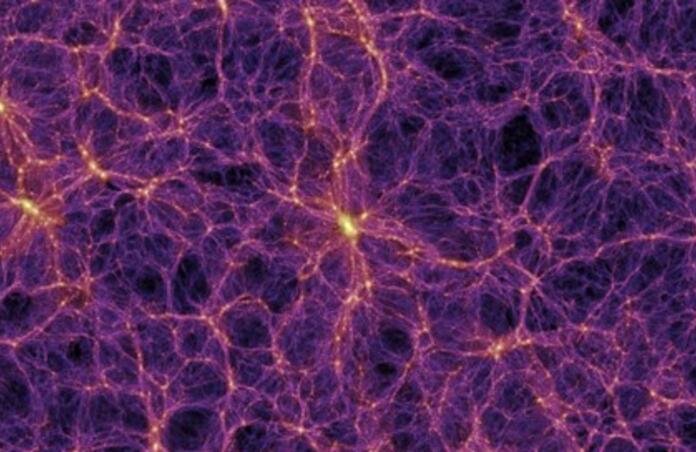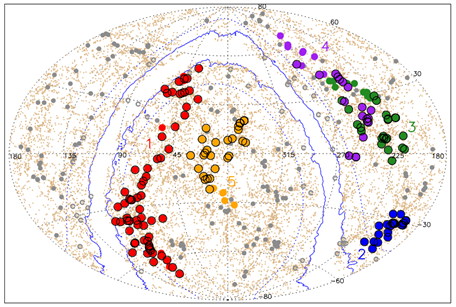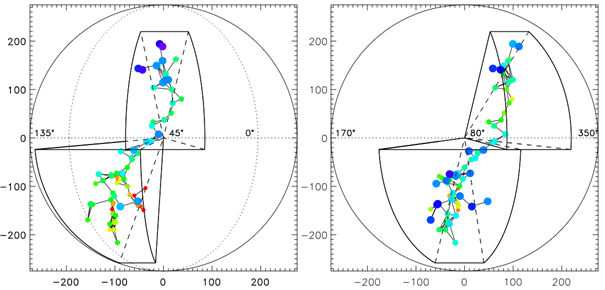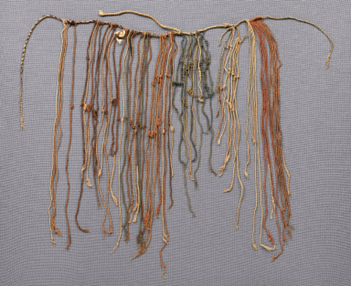Discovering Quipu – The Largest Confirmed Superstructure in the Local Universe

Superclusters are among the largest known structures in the universe, consisting of groups of galaxy clusters. These galaxy clusters are the largest gravitationally bound structures known, each containing hundreds or thousands of galaxies. While superclusters themselves are not gravitationally bound, the proximity of these clusters allows them to be recognized as part of a larger, interconnected structure. Superclusters belong to a broader class of cosmic structures called superstructures, which encompass all of the largest known formations in the universe, including voids, filaments, and walls that further shape the cosmic landscape.
A study led by Hans Böhringer investigates the presence and distribution of these superstructures in our local universe. The study leverages the CLASSIX cluster sample, collected during the ROSAT All-Sky Survey. This data was further supplemented with a series of optical spectroscopic observations, primarily at the European Southern Observatory (ESO). These were used to derive an accompanying redshift for each cluster. The team worked with a sample of 345 clusters within the local universe, isolated to a shell of redshifts between z = 0.03 – 0.06. Their investigation identifies 155 of these as belonging to a superstructure. Using this data, the team could reconstruct a 3d density map of clusters within this shell.

To classify superstructures, Böhringer et al. applied a friends-of-friends (FoF) algorithm, linking clusters within a predefined distance. This distance was empirically determined by evaluating which values produced realistic structures while successfully identifying known superclusters, such as Shapley. The resulting process formed interconnected webs of clusters, defining their superstructures.
However, the study was constrained by flux limitations at different redshifts. At greater distances, only the brightest clusters were visible, creating the illusion of decreasing structure density due to observational biases. Applying the FoF algorithm without correction led to well-connected structures at low redshift but fragmented ones at higher redshift. To address this, the linking distance was scaled with redshift, compensating for the discrepancy between observed and actual cluster densities.

Of the superstructures they catalogued, the team also identified one larger than any previously found. This supercluster spans a length of 428 Mpc and is estimated to contain around 400 quadrillion stars. The team has named the structure Quipu, after an ancient Incan counting tool made of coloured chords and knots, often used to store information such as census records. The authors explain that the design of this device resembles the shape of the superstructure. Additionally, this choice pays homage to the ESO in Chile, where most of the cluster data was collected.

As mentioned, superclusters they are not gravitationally bound structures. Instead, they represent transient formations that will gradually disperse over time. However, their present existence provides valuable insight into the history of cosmic structure formation. The paper emphasises that understanding their evolution is essential for refining cosmological parameters and that future research should aim to characterise the influence of these superstructures on galaxy populations and their evolutionary pathways within the universe.
--
Journal Source: H. Böhringer et al, Unveiling the largest structures in the nearby Universe: Discovery of the Quipu superstructure, Astronomy and Astrophysics, (2025), arXiv: https://arxiv.org/abs/2501.19236
Cover Image Credit: Springel et al./Virgo Consortium
